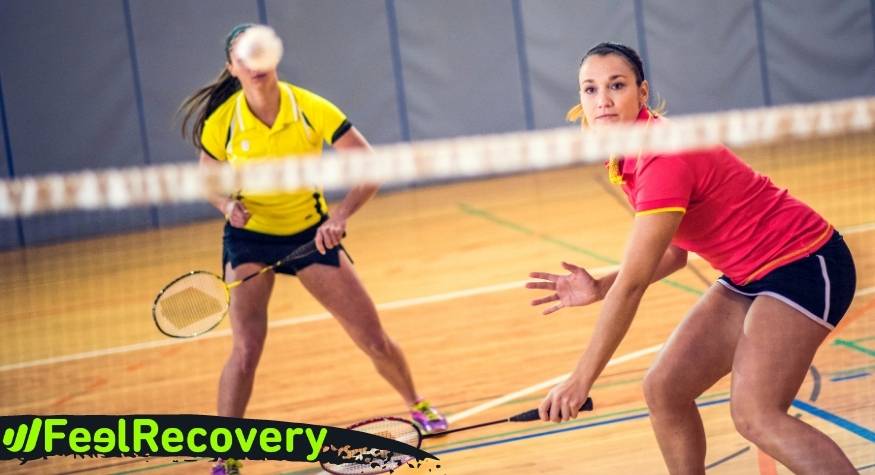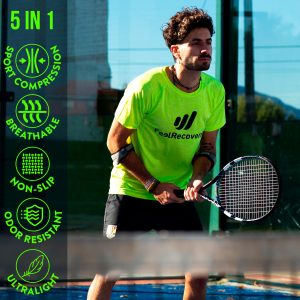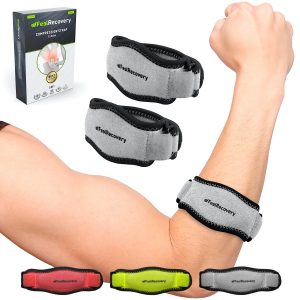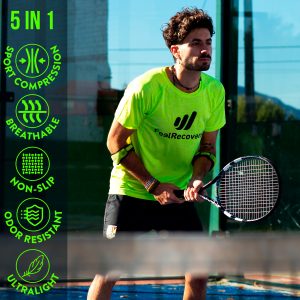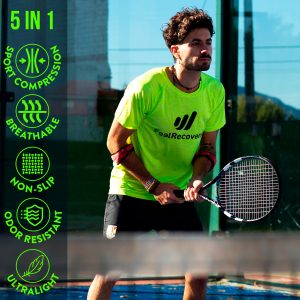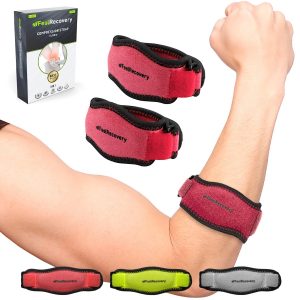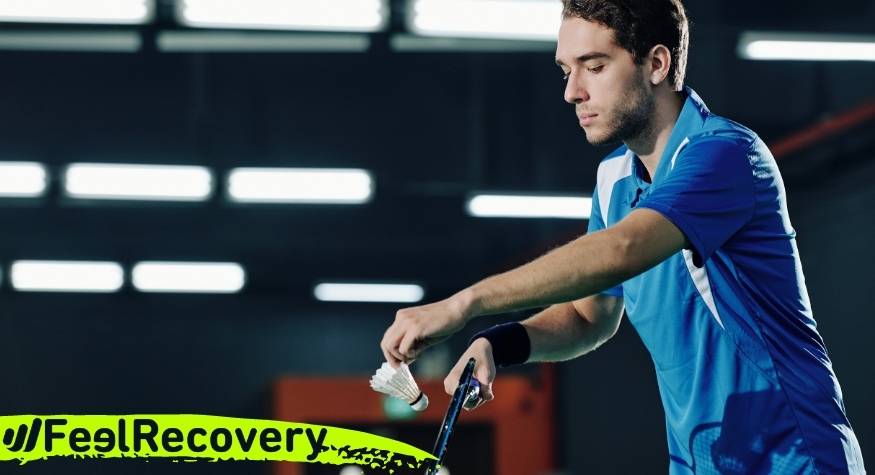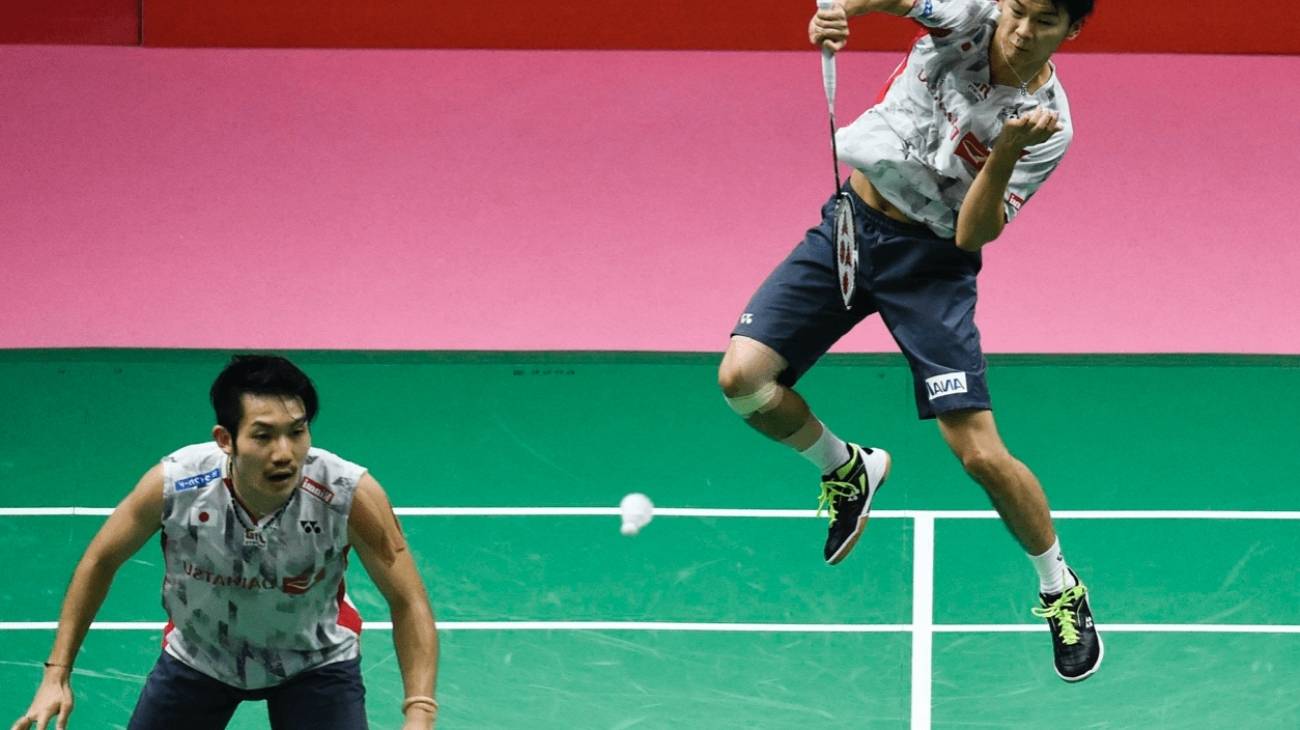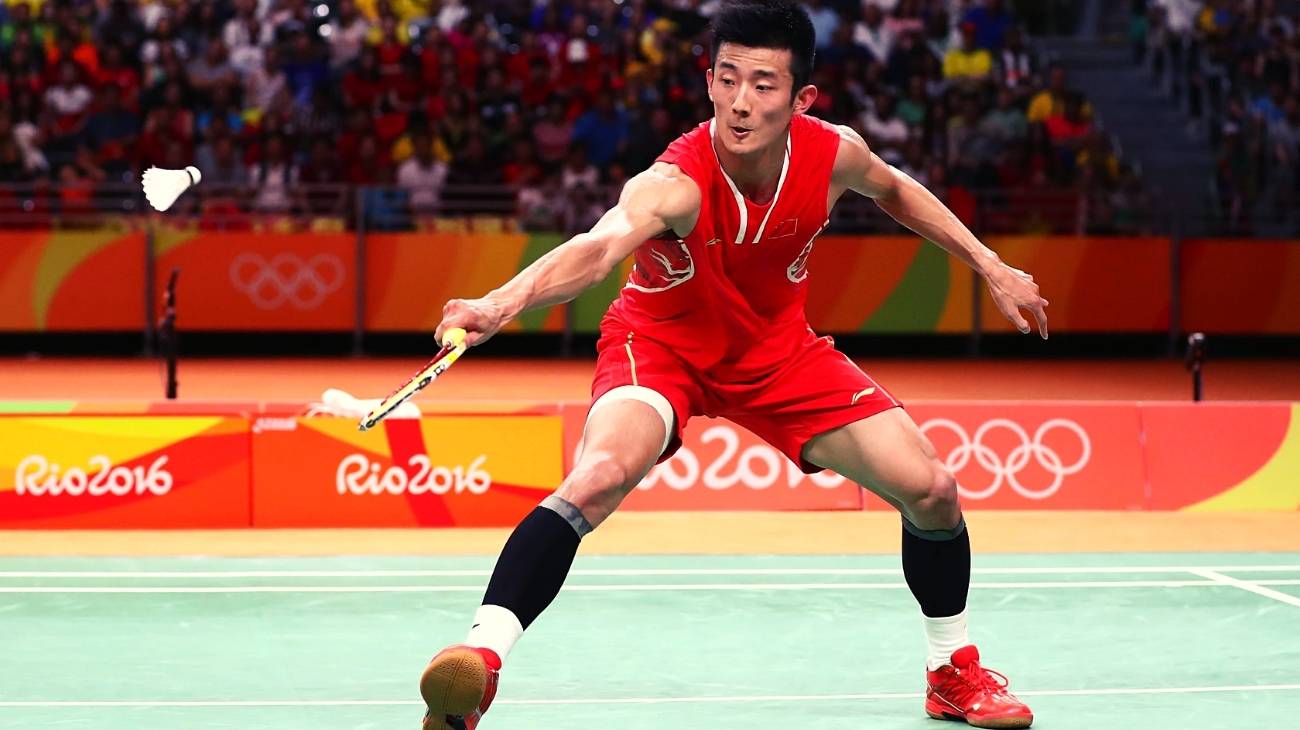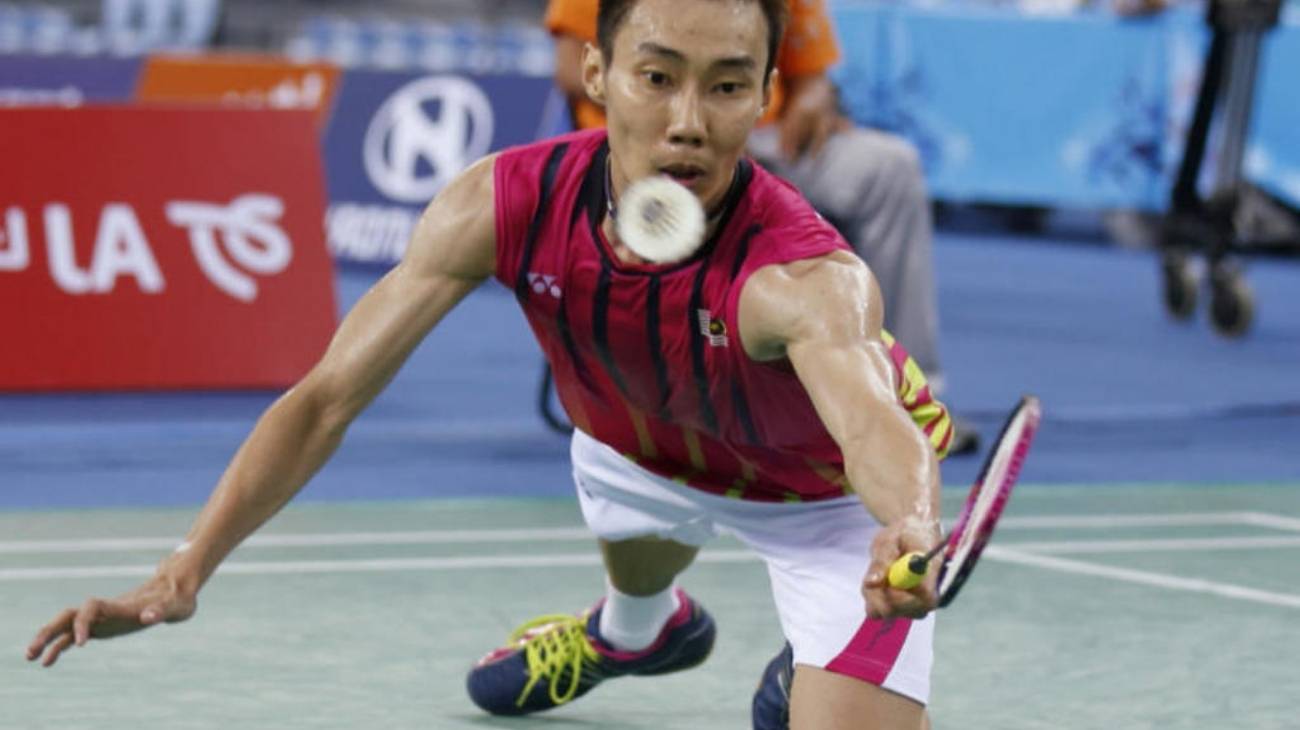Although it may not seem like it, badminton is a very popular sport in Asia and is recently gaining more followers in Europe. As it is a fast-moving discipline, the body wears out more easily and injuries are common.
In this article you will learn the most effective injury prevention methods to ensure you are never out of the Olympic sport. You will learn about the most common types of injuries, as well as techniques for a good warm-up and the right badminton equipment that every professional should have.
What are the most common types of injuries when playing badminton?
The likelihood of injury in badminton is lower than in other racket sports, however you should be aware of the ailments and discomforts to which you will be exposed during training and competition. 58% of badminton injuries occur in the legs, the rest between the arms and back.
- Sprained ankle: Of all the foot injuries, this is the most common. The ankle turns inwards, in inversion, and bears the full weight of the body, causing the ligaments to overextend. This movement damages the tissues of the outer ligaments of the joint. As this is damage caused by an explosive movement, proper footwear is a good way to prevent sprain.
- Lateral epicondylitis: also known as "tennis elbow", this can occur from using a non-professional racquet, which is heavier and not shaped to standards. Another risk factor is the constant repetition of movement, and even the player's preference for one way of hitting the shuttlecock or backhand.
- Medial epicondylitis: instead of the pain being felt on the outside of the elbow, the injury occurs on the inside. The causes are the same as in tennis elbow. Interestingly, this injury is called "golfer's elbow".
- Wrist tendonitis: We have already mentioned that wear and tear is a very high risk factor in any sport, and in badminton you will need to repeat strokes and moves to reach the shuttlecock. The wrist is susceptible to repetitive stress, to sudden application of force on that area. The pain from tendonitis becomes sharp and stabbing.
- Jumper's knee: is a consequence of overuse of the knee by constantly performing a repetitive motion incorrectly. Remember that the knees and ankles support the entire weight of the body in the movements. Their only support is the player's anticipation and the use of appropriate footwear.
- Rotator cuff tendinitis: This is an injury that is concentrated in the shoulder and occurs when one or more of the muscles that allow free movement of the shoulder are ruptured. This is quite common in throwing sports, such as baseball, and in racquet sports such as tennis and badminton.
Best products for badminton injury recovery
Bestseller
-
2 Ankle Compression Sleeve (Black/Gray)
$19.95 -
2 Ankle Compression Sleeve (Green/Navy)
$19.95 -
2 Ankle Compression Sleeve (Pink/Bordeaux)
$19.95 -
2 Elbow Compression Sleeve (Black/Gray)
$19.95 -
2 Elbow Compression Sleeve (Green/Navy)
$19.95 -
2 Elbow Compression Sleeve (Pink/Bordeaux)
$19.95 -
2 Knee Compression Sleeve (Black/Gray)
$19.95 -
2 Knee Compression Sleeve (Green/Navy)
$19.95 -
2 Knee Compression Sleeve (Pink/Bordeaux)
$19.95 -
2 Patella Knee Strap (Black/Gray)
$14.95 -
2 Patella Knee Strap (Green/Navy)
$14.95 -
2 Patella Knee Strap (Pink/Bordeaux)
$14.95 -
2 Tennis Elbow Brace (Black/Gray)
$14.95 -
2 Tennis Elbow Brace (Green/Navy)
$14.95 -
2 Tennis Elbow Brace (Pink/Bordeaux)
$14.95 -
2 Thigh Compression Sleeve (Black/Gray)
$19.95 -
2 Thigh Compression Sleeve (Green/Navy)
$19.95 -
2 Thigh Compression Sleeve (Pink/Bordeaux)
$19.95 -
Acupressure Mat and Pillow (Black/Gray)
$49.95 -
Acupressure Mat and Pillow (Green/Navy)
$49.95 -
Acupressure Mat and Pillow (Pink/Bordeaux)
$49.95 -
Acupressure Pillow (Black/Gray)
$29.46 -
Acupressure Pillow (Green/Navy)
$29.46 -
Acupressure Pillow (Pink/Bordeaux)
$29.46 -
Foot Massage Roller for Plantar Fasciitis (Black)
$19.95 -
Foot Massage Roller for Plantar Fasciitis (Green)
$19.95 -
Foot Massage Roller for Plantar Fasciitis (Pink)
$19.95 -
Heating Pad for Microwave Classic Bottle Shaped (Hearts)
$19.95 -
Heating Pad for Microwave Classic Bottle Shaped (Oxford)
$19.95 -
Heating Pad for Microwave Classic Bottle Shaped (Sport)
$19.95 -
High Density Foam Roller for Muscle (Black/Gray)
$29.95 -
High Density Foam Roller for Muscle (Green/Navy)
$29.95 -
High Density Foam Roller for Muscle (Pink/Bordeaux)
$29.95 -
Ice Massage Roller Ball (Black)
$39.95 -
Ice Massage Roller Ball (Green)
$39.95 -
Ice Massage Roller Ball (Pink)
$39.95 -
Microwaveable Heating Pad for Pain Relief (Hearts)
$19.95 -
Microwaveable Heating Pad for Pain Relief (Oxford)
$19.95 -
Microwaveable Heating Pad for Pain Relief (Sport)
$19.95 -
Pack 2 In 1 Foam Roller High + Soft Density (Black/Gray)
$29.95 -
Pack 2 In 1 Foam Roller High + Soft Density (Green/Navy)
$29.95 -
Pack 2 In 1 Foam Roller High + Soft Density (Pink/Bordeaux)
$29.95 -
Shoulder Support Brace (Black)
$24.95 -
Shoulder Support Brace (Green)
$24.95 -
Shoulder Support Brace (Pink)
$24.95 -
Soft Density Foam Roller for Recovery (Black)
$29.95 -
Soft Density Foam Roller for Recovery (Green)
$29.95 -
Soft Density Foam Roller for Recovery (Pink)
$29.95 -
Trigger Point Massage Stick (Black)
$14.95 -
Trigger Point Massage Stick (Green)
$14.95 -
Trigger Point Massage Stick (Pink)
$14.95 -
Wrist Brace (Black/Gray)
$19.95 -
Wrist Brace (Green/Navy)
$19.95 -
Wrist Brace (Pink/Bordeaux)
$19.95
List of injury prevention methods for badminton players
All these recommendations should be taken into account depending on the type of training to be performed, and whether the purpose of the training is recreational or professional. The body and mind work differently in each case.
Warming up well
Warming up prepares the body and mind for the physical activity that follows. When your body is not well prepared, the possibility of accidents and injuries increases. In an orderly manner, we must put into operation the organic systems, the elements of locomotion and movement.
At least five laps of the court should be done, although the jogging time will be less or more depending on how long it takes the athlete to warm up. In badminton there are different types of strokes, and all of them should be practised: such as the "drive or offensive stroke", in which you should have your weight on the top of the sole of the foot and the stroke is very fast by turning the wrist.
Finish your workouts with a cool-down
In this case, cooling down the body is not about icing the joints. It is a matter of gradually reducing physical activity so that the body returns to its natural state. Blood pressure and heart rate rise during training and when we "cool down" it properly we prepare it for a period of inactivity and proper rest.
Stretching exercises are essential to properly cool down the body after a workout or competition. This is because they progressively release tension from the joints and allow the heart rate to regulate.
Good nutrition and hydration
Carbohydrates and proteins should be in the daily diet of a badminton player, but need not be in excess. Also, portions should be measured; eating five times a day and in moderate amounts will always be better than eating three times a day and in large quantities. The body absorbs nutrients better with the first option. Hydration is constant, every 20 minutes and in small amounts during training, and as you feel thirsty throughout the day.
Improve your fitness
More than just looking good, the goal is to develop more strength in the upper limbs and endurance in the lower limbs. As the back also suffers from the demands of badminton, training should cover this area of the body.
Remember that your body should not be heavy, so the Muscle Mass Index (MMI) should be measured and taken into account. Also, to withstand the speeds of the game you will need to have a well done anaerobic preparation, so that your resistance to fatigue is maximised.
Sports massage
More than a relaxing massage, sports massage aims to relieve discomfort in mildly injured parts of your body. This will help us to release tension in the muscles and joints, which builds up in unhealthy amounts after every training session or competition.
If you are uninjured or suffering from a minor ailment, you can have a massage guided by a physiotherapist to strengthen your muscles or speed up the recovery process. However, under no circumstances should we allow a massage after a fracture or sprain.
Use of heat/cold therapies
The purpose of your application will determine its use. If you want to relieve severe pain and reduce inflammation, cold is the best way to achieve this. When you want the body to maintain its rhythm and blood flow to increase, then heat is the option you are looking for. At this level, the use of both is only for a few minutes or a day if indicated by the sports physician.
Use of compression garments
In badminton the most common are compression sleeves and compression socks. These have the quality of keeping the heat in those areas and improve the muscular work. Their only contraindication is time, as overuse of these items can lead to vascular problems that can weaken muscles and facilitate injuries.
Use of acupressure therapies
What is its purpose? To allow the flow of energy that has been accumulated in a single area and that generates discomfort and pain. It is a form of therapy for minor injuries, as it will not be effective for major ailments. Acupressure is similar to acupuncture, except that acupressure uses needles and acupressure uses the fingers and palms of the hands to generate the desired pressure in the area.
Use of thermotherapy and cryotherapy
These are physiotherapy tools for the treatment of injuries in the reintegration stage of the athlete's return to activity. Thermotherapy and cryotherapy should only be used when indicated by the sports physician. It is the same as talking about cold and heat, but its application is more complex (equipment) and designed for the long term, used in much more demanding recovery processes.
Use of the right equipment
Let's move on to the clothing that athletes in this discipline should have. T-shirts and shorts should be made of cotton to absorb sweat as well as possible. Unlike other sports, the use of synthetic fabrics has not become widespread in tennis or badminton.
Shoes should fit snug and true to size, neither too big nor too small. If there is a mistake, the player is likely to get annoying blisters that impede good performance. Good footwear helps the movements to be more effective and faster.
Finally the racquet, we must use a suitable one because if we carry a bigger one we can have serious problems in our wrists and shoulders due to the excess weight.
References
- Krøner, K., Schmidt, S. A., Nielsen, A., Yde, J., Jakobsen, B. W., Møller-Madsen, B., & Jensen, J. (1990). Badminton injuries. British journal of sports medicine, 24(3), 169-172. https://bjsm.bmj.com/content/24/3/169.short
- Fahlström, M., Björnstig, U., & Lorentzon, R. (1998). Acut badminton injuries. Scandinavian Journal of Medicine & Science in Sports, 8(3), 145-148. https://onlinelibrary.wiley.com/doi/abs/10.1111/j.1600-0838.1998.tb00184.x
- Jørgensen, U., & Winge, S. (1987). Epidemiology of badminton injuries. International journal of sports medicine, 8(06), 379-382. https://www.thieme-connect.com/products/ejournals/abstract/10.1055/s-2008-1025689
- Hensley, L. D., & Paup, D. C. (1979). A survey of badminton injuries. British Journal of Sports Medicine, 13(4), 156-160. https://bjsm.bmj.com/content/13/4/156.short
- Pardiwala, D. N., Subbiah, K., Rao, N., & Modi, R. (2020). Badminton injuries in elite athletes: A review of epidemiology and biomechanics. Indian journal of orthopaedics, 54(3), 237-245. https://link.springer.com/article/10.1007/s43465-020-00054-1
- Jørgensen, U., & Winge, S. (1990). Injuries in badminton. Sports Medicine, 10, 59-64. https://link.springer.com/article/10.2165/00007256-199010010-00006
- Goh, S. L., Mokhtar, A. H., & Mohamad Ali, M. R. (2013). Badminton injuries in youth competitive players. J Sports Med Phys Fitness, 53(1), 65-70. https://www.researchgate.net/profile/Siew-Li-Goh-2/publication/235885246_Badminton_injuries_in_youth_competitive_players/links/57484a8608ae707fe21fbb10/Badminton-injuries-in-youth-competitive-players.pdf
- Muttalib, A., Zaidi, M., & Khoo, C. (2009). A survey on common injuries in recreational badminton players. Malaysian Orthopaedic Journal, 3(2), 8-11. https://citeseerx.ist.psu.edu/document?repid=rep1&type=pdf&doi=ba75ad32fb698b19e4fb3d1d8c735616e3a6993d
- Fu, L., Ren, F., & Baker, J. S. (2017). Comparison of joint loading in badminton lunging between professional and amateur badminton players. Applied Bionics and Biomechanics, 2017. https://www.hindawi.com/journals/abb/2017/5397656/
- Feng, B., & Wang, X. (2022). Study on sports injuries and rehabilitation in badminton players. Revista Brasileira de Medicina do Esporte, 29. https://www.scielo.br/j/rbme/a/PCH35GrCYHVnLZzmzMbgrZq/abstract/

